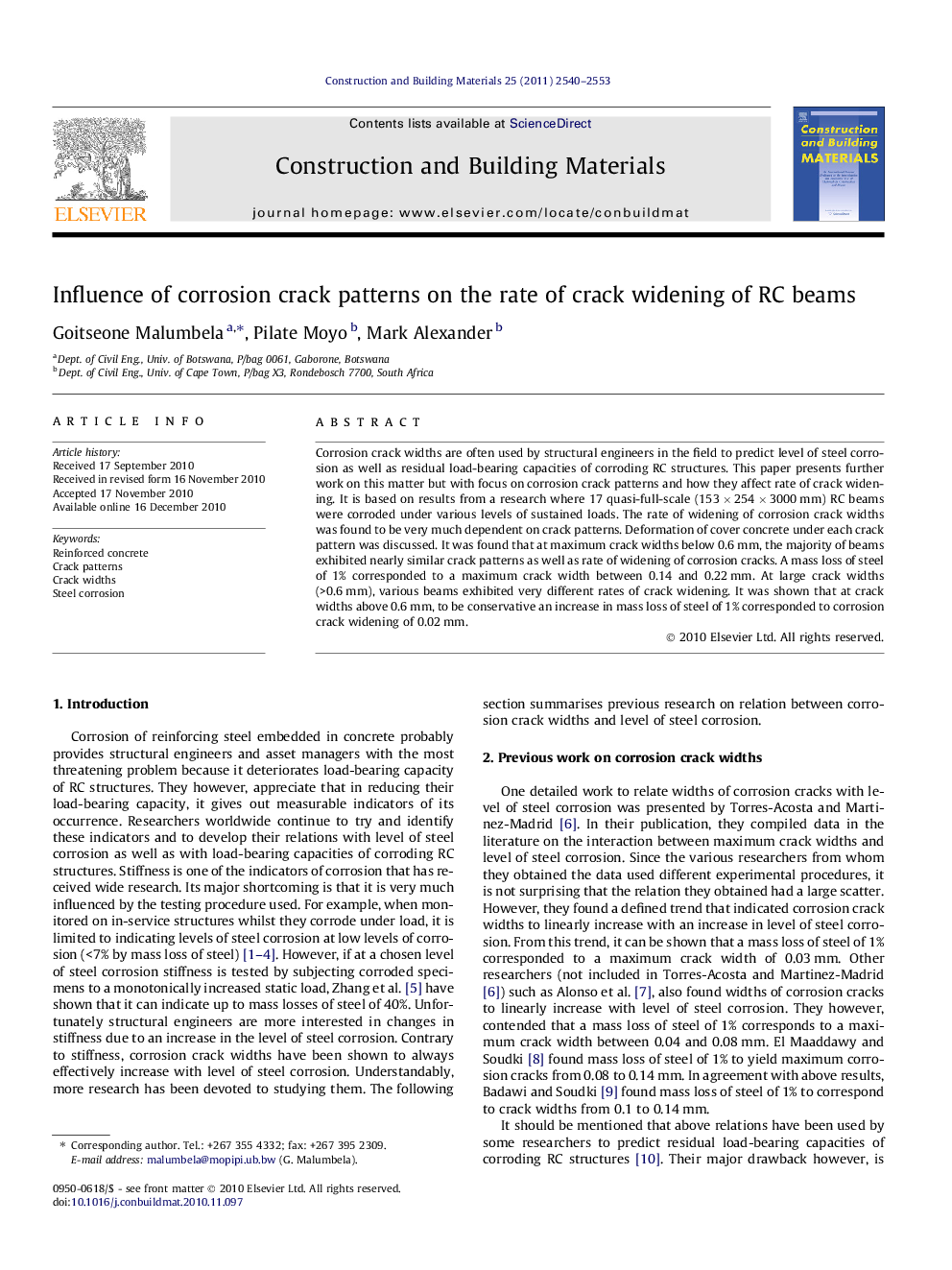| Article ID | Journal | Published Year | Pages | File Type |
|---|---|---|---|---|
| 259295 | Construction and Building Materials | 2011 | 14 Pages |
Corrosion crack widths are often used by structural engineers in the field to predict level of steel corrosion as well as residual load-bearing capacities of corroding RC structures. This paper presents further work on this matter but with focus on corrosion crack patterns and how they affect rate of crack widening. It is based on results from a research where 17 quasi-full-scale (153 × 254 × 3000 mm) RC beams were corroded under various levels of sustained loads. The rate of widening of corrosion crack widths was found to be very much dependent on crack patterns. Deformation of cover concrete under each crack pattern was discussed. It was found that at maximum crack widths below 0.6 mm, the majority of beams exhibited nearly similar crack patterns as well as rate of widening of corrosion cracks. A mass loss of steel of 1% corresponded to a maximum crack width between 0.14 and 0.22 mm. At large crack widths (>0.6 mm), various beams exhibited very different rates of crack widening. It was shown that at crack widths above 0.6 mm, to be conservative an increase in mass loss of steel of 1% corresponded to corrosion crack widening of 0.02 mm.
Research highlights► For corrosion cracks below 0.6 mm, beams have similar rate of crack widening. ► For corrosion cracks above 0.6 mm, rate of crack widening depends on crack patterns. ► Service life based on corrosion crack widths should account for crack patterns. ► A 1% maximum mass loss of steel corresponds to a corrosion crack width of 0.02 mm.
